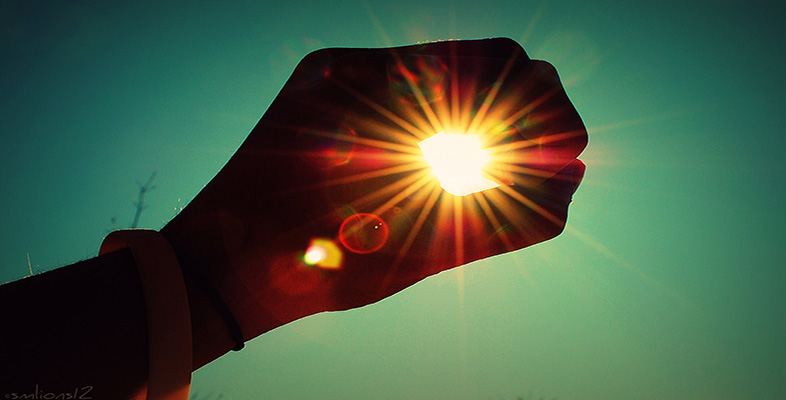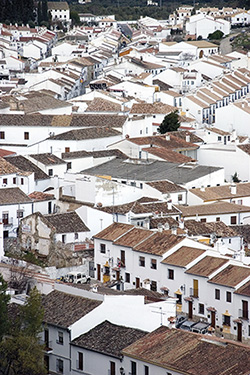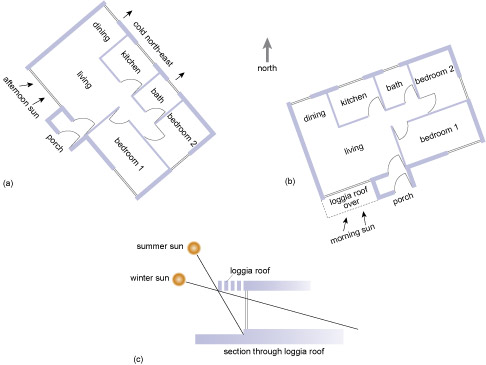Homes in different climates
The best way to think about orientation and climate is to think about pitching a tent. Imagine different types of climate and where you’d put your tent in order to minimise the negative effects of the climate and maximise the positive effects. What is the first thing you think of when you arrive at a place to pitch a tent? If it was windy, you’d probably look for somewhere protected from the wind; if it was wet, you’d probably look for the driest place; if it was very hot, you’d probably look for somewhere that was shaded. And the fact that you have a tent probably means that you’d like a good view, so that is something else to think about! What you are doing, in actual fact, is making a design decision; balancing a number of different factors to try to work out what the best (or optimal) solution is.
However good we think our solution is, though, we inevitably find that it can be improved. We might forget to think about where the Sun will come up in the morning if we are pitching our tent late in the day and wake to find we are much too hot. We might have pitched our tent at the bottom of a hill, to keep out of the wind, and wake to find it has rained heavily during the night, and that our tent is now on soggy ground. If we are staying in the same place for another night, we will alter our ‘solution’ accordingly, to further optimise our design.
Activity 7 Climate and house design
With reference to what you have just read, what do you think a sunny, hot climate like that of the south of Spain would do to the design of houses?
Discussion
The climate in southern Spain tends to be hot and arid, especially during the summer months when there is a lot of sunshine and not much rain. This tends to mean that houses are designed more for shade, and the reduction of solar gain, than capturing sunlight. Southern Spain is also famous for its ‘white towns’, where houses are whitewashed to avoid absorbing heat from the Sun (white things absorb much less heat than dark things and stay cooler as a result). In general, southern Spanish houses have relatively small south-facing windows and more shaded spaces, for example by using overhangs or loggia to block direct sunlight in the summer. They also use ‘cooler’ materials, for example terracotta roof and floor tiles, and lightweight bricks that don’t retain heat.
Changing the orientation of a home plan can have a major effect on how much solar heat it might gain. In one orientation a home can be overheated by the Sun in summer, yet get little or no benefit from the Sun in winter; in a different orientation the same home design can be picking up maximum solar gain in the winter, while not becoming overheated in summer.
To understand how this change of orientation can be so significant, you need to know something of the Sun’s apparent movement in the sky (Figure 8).

The Sun’s relationship to the Earth is constantly changing – through days, months and seasons, which means it is never in quite the same position. In the UK in midsummer, the Sun rises in the north-east and sets in the north-west and at midday reaches an angle overhead of approximately 60° to the horizontal. In midwinter, it rises in the southeast and sets in the south-west, and at midday reaches an angle of only 15° to the horizontal. Between midsummer and midwinter the apparent path of the Sun varies between these extremes.
Activity 8 Which home for which climate?
Look at the figures below and try to work out which home would suit the UK climate and which would suit the southern Spanish climate. Ask yourself which rooms would benefit from solar gain, and at what time of year. What function do you think the overhanging roof achieves?
Discussion
Figure (9a) is more suited to the UK climate and (9b) is more suited to a Spanish climate. In (9a), the living room and bedroom 1 face the south-west and gain the maximum midsummer solar heat, but in midwinter they receive light from the setting Sun too late in the day to gain much benefit from it. In (9b), the living room and bedroom 1 face the southeast and receive the morning Sun, which helps to warm the home in midwinter but which doesn’t cause them to become too hot in summer. The overhanging roof shades the main living room windows from the hottest south and south-westerly Sun in midsummer, but in midwinter the Sun is lower in the sky and therefore penetrates below the shading angle of the roof. Also, in (9b), the dining room and kitchen pick up the late-evening summer Sun in the north-west, which might be welcome, and both bedrooms receive early-morning Sun for most of the year.


